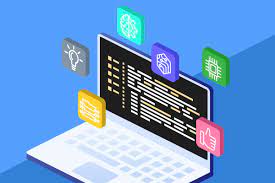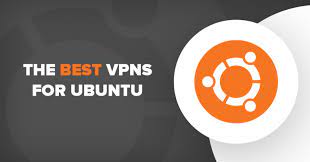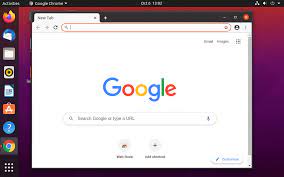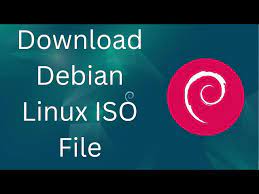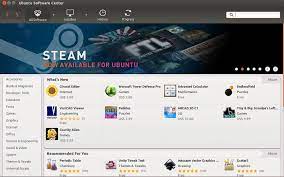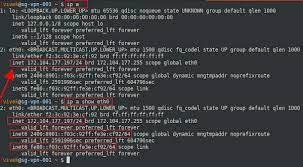The Power of Software: Revolutionizing the Digital World
The Power of Software: Revolutionizing the Digital World
Software is the invisible force that powers our modern world. From the devices we use daily to the complex systems that drive industries, software plays a crucial role in shaping how we live, work, and interact with technology.
At its core, software is a set of instructions that tell a computer how to perform tasks and process data. It comes in various forms, from operating systems and applications to programming languages and tools. Each piece of software serves a specific purpose, whether it’s enabling communication through messaging apps, automating processes in businesses, or simulating virtual worlds in gaming.
One of the key strengths of software is its adaptability. Developers can create new programs or update existing ones to meet changing needs and address emerging challenges. This flexibility allows software to evolve rapidly, driving innovation across industries and opening up new possibilities for what technology can achieve.
Software has also democratised access to information and tools. Open-source software, in particular, empowers developers and users to collaborate, modify, and distribute code freely. This collaborative approach fosters creativity, accelerates development cycles, and promotes transparency within the tech community.
However, with great power comes great responsibility. As our reliance on software grows, so do concerns about security, privacy, and ethical implications. Developers must prioritise robust cybersecurity measures to protect data and systems from threats. They also need to consider the ethical implications of their creations, ensuring that software is designed with user well-being and societal impact in mind.
In conclusion, software is not just lines of code; it is a catalyst for change and progress in the digital age. Its transformative potential continues to shape our world in ways we never imagined possible. As we navigate an increasingly interconnected world driven by technology, understanding the power of software is essential for harnessing its benefits while mitigating its risks.
Eight Key Advantages of Software: Boosting Productivity, Collaboration, and Innovation in the Digital Age
- Enhances productivity by automating tasks and streamlining processes.
- Facilitates communication and collaboration through messaging and video conferencing apps.
- Enables creativity and innovation by providing tools for design, development, and content creation.
- Improves efficiency in businesses by managing data, tracking performance, and optimising operations.
- Enhances learning opportunities through educational software that offers interactive lessons and simulations.
- Increases accessibility to information and services for users around the world.
- Empowers individuals to customise their digital experience with a wide range of software options.
- Supports remote work arrangements by enabling virtual meetings, file sharing, and cloud-based workflows.
Seven Key Downsides of Software: From Bugs to Bloat
- Software bugs and glitches can lead to system crashes or malfunctions.
- Compatibility issues may arise when software is not designed to work with certain hardware or other programs.
- Software piracy poses a threat to intellectual property rights and revenue streams for developers.
- Maintenance costs can be high, especially for complex software systems that require regular updates and support.
- Learning curves can be steep for new software, leading to productivity dips as users adapt to unfamiliar interfaces or features.
- Security vulnerabilities in software can expose sensitive data to cyber threats and breaches.
- Software bloat, where programs become bloated with unnecessary features, can slow down performance and consume excessive resources.
Enhances productivity by automating tasks and streamlining processes.
Software plays a pivotal role in enhancing productivity by automating tasks and streamlining processes. By leveraging automation capabilities, software enables businesses and individuals to save time and resources that would otherwise be spent on manual labour. Tasks that are repetitive or time-consuming can be automated, allowing users to focus on more strategic activities. This not only increases efficiency but also reduces the likelihood of errors, leading to smoother operations and improved overall productivity.
Facilitates communication and collaboration through messaging and video conferencing apps.
Software plays a pivotal role in facilitating seamless communication and collaboration through messaging and video conferencing apps. These innovative tools have revolutionised the way individuals and teams interact, enabling real-time conversations, file sharing, and virtual meetings regardless of geographical boundaries. By breaking down communication barriers and fostering instant connectivity, software empowers people to work together efficiently, share ideas effortlessly, and build strong relationships in both professional and personal spheres.
Enables creativity and innovation by providing tools for design, development, and content creation.
Software serves as a catalyst for creativity and innovation by offering a diverse range of tools for design, development, and content creation. From graphic design software that empowers artists to bring their visions to life, to programming languages that enable developers to build cutting-edge applications, software provides the building blocks for turning ideas into reality. Whether it’s crafting captivating visuals, developing innovative solutions, or producing engaging content, the versatility and power of software unlock endless possibilities for individuals and industries to push the boundaries of creativity and drive meaningful progress.
Software plays a crucial role in enhancing efficiency within businesses by streamlining operations, managing data effectively, tracking performance metrics, and optimising processes. Through the use of specialised software solutions, organisations can automate repetitive tasks, centralise data storage for easy access and analysis, monitor key performance indicators in real-time, and identify areas for improvement to boost productivity and profitability. By leveraging software tools tailored to their specific needs, businesses can achieve greater operational efficiency, make informed decisions based on data-driven insights, and ultimately drive sustainable growth in today’s competitive market landscape.
Enhances learning opportunities through educational software that offers interactive lessons and simulations.
Educational software has revolutionised learning by providing interactive lessons and simulations that engage students in a dynamic and immersive way. Through these innovative tools, learners can explore complex concepts, conduct experiments, and solve problems in a hands-on environment. This interactive approach not only enhances understanding but also fosters critical thinking skills and encourages active participation, ultimately transforming traditional education into a more engaging and effective learning experience.
Software plays a pivotal role in enhancing accessibility to information and services for users worldwide. By enabling the development of user-friendly interfaces, online platforms, and digital tools, software breaks down geographical barriers and empowers individuals to access a wealth of knowledge and services at their fingertips. Whether it’s through educational resources, e-commerce platforms, or communication tools, software bridges gaps and connects people from diverse backgrounds, ultimately fostering a more inclusive and interconnected global community.
Empowers individuals to customise their digital experience with a wide range of software options.
Software empowers individuals to customise their digital experience by offering a diverse range of options tailored to their specific needs and preferences. Whether it’s choosing from a variety of productivity tools, entertainment apps, or creative software, users have the flexibility to personalise their digital environment to enhance efficiency, creativity, and enjoyment. This abundance of software choices not only allows individuals to tailor their technology usage to suit their unique requirements but also fosters a sense of autonomy and empowerment in navigating the digital landscape.
Supports remote work arrangements by enabling virtual meetings, file sharing, and cloud-based workflows.
Software plays a pivotal role in supporting remote work arrangements by facilitating virtual meetings, seamless file sharing, and efficient cloud-based workflows. Through the use of collaborative tools and communication platforms, individuals can connect with colleagues from anywhere in the world, fostering teamwork and productivity. File sharing capabilities enable easy access to documents and resources, ensuring that team members can collaborate effectively despite physical distance. Additionally, cloud-based workflows streamline processes and provide flexibility for employees to work remotely while maintaining efficiency and data security. The versatility of software empowers organisations to embrace remote work arrangements with confidence, enabling teams to stay connected and productive in a digital workspace.
Software bugs and glitches can lead to system crashes or malfunctions.
Software bugs and glitches pose a significant risk to the stability and functionality of digital systems. When left unresolved, these issues can result in system crashes or malfunctions, disrupting operations, causing data loss, and potentially compromising user experience. The impact of software errors extends beyond inconvenience, as they can also lead to financial losses for businesses, security vulnerabilities for individuals, and reputational damage for software developers. Addressing and mitigating software bugs and glitches is crucial to maintaining the reliability and performance of technology systems in an increasingly interconnected world.
Compatibility issues may arise when software is not designed to work with certain hardware or other programs.
Compatibility issues can pose a significant challenge when software is not optimised to function seamlessly with specific hardware configurations or other software applications. These issues can lead to frustrating user experiences, system crashes, and decreased productivity. When compatibility problems arise, users may be forced to seek workarounds or invest in additional resources to ensure smooth operation, highlighting the importance of thorough testing and integration protocols during the software development process.
Software piracy poses a threat to intellectual property rights and revenue streams for developers.
Software piracy poses a significant threat to intellectual property rights and revenue streams for developers. When individuals or organisations illegally copy, distribute, or use software without proper licensing, it undermines the hard work and creativity of developers who invest time and resources into creating innovative solutions. This unethical practice not only deprives developers of their rightful earnings but also discourages future investment in software development, ultimately hindering technological advancement and innovation. By combating software piracy through education, enforcement of copyright laws, and promoting ethical consumption practices, we can protect intellectual property rights and support a sustainable ecosystem for software development.
Maintenance costs can be high, especially for complex software systems that require regular updates and support.
One significant drawback of software is the high maintenance costs associated with complex systems that demand regular updates and support. These expenses can quickly accumulate, posing a financial burden on businesses and organisations relying on intricate software solutions. From ensuring compatibility with evolving technologies to addressing security vulnerabilities and bug fixes, the ongoing maintenance requirements of sophisticated software systems can strain resources and budgets, making it challenging to keep pace with the ever-changing digital landscape.
Learning curves can be steep for new software, leading to productivity dips as users adapt to unfamiliar interfaces or features.
One significant drawback of software is the steep learning curves that often accompany new applications or tools. When users are faced with unfamiliar interfaces or features, they may experience a period of adjustment that can result in decreased productivity. The time and effort required to become proficient in using the software can lead to frustration and inefficiencies as users navigate through the complexities of the new system. This learning curve can be a barrier to adoption, hindering users from fully utilising the capabilities of the software and impacting overall productivity levels within an organisation.
Security vulnerabilities in software can expose sensitive data to cyber threats and breaches.
Security vulnerabilities in software pose a significant risk to individuals and organisations alike, as they can expose sensitive data to cyber threats and breaches. These weaknesses in software systems provide entry points for malicious actors to exploit, potentially leading to the compromise of personal information, financial data, or intellectual property. The consequences of such breaches can be severe, resulting in financial loss, reputational damage, and loss of trust from customers and stakeholders. It is imperative for software developers and users to prioritise security measures and stay vigilant against potential threats to safeguard against these risks.
Software bloat is a concerning drawback in the realm of technology, where programs accumulate unnecessary features that not only hinder performance but also devour an excessive amount of resources. This phenomenon leads to sluggish operation, increased memory usage, and longer loading times, ultimately diminishing the user experience. As software becomes laden with superfluous functionalities, it not only complicates the user interface but also exacerbates system inefficiencies, highlighting the importance of prioritising lean and efficient coding practices to combat software bloat effectively.




